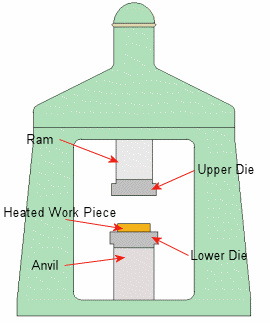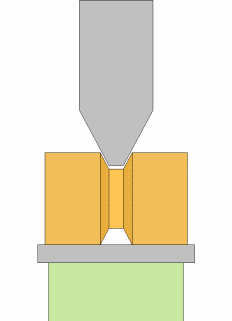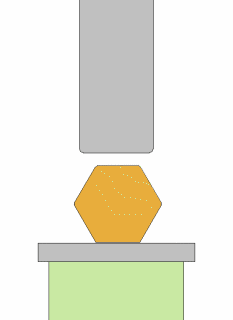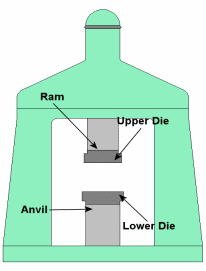My engineering word starts when I was in standard one. During the time when I was small, I have totally don’t have any idea about what is the word “engineer” stands for, what is the job specification of engineers, how many division of engineering that exist in the world and so on. But, what had I put in my first ambition is – engineer. The childish thinking of mine does not drive me to explore more about engineering. However, the ambition keeps on changes as the years go by Engineer, Doctor, Painter, Musician, Architectural ….
My real engineering story starts when I won the third prize in the Physic Olympiad 2004. I have a well preparation work before I went to that competition. After the competition, I feel that my interest is actually lies on mathematics and physics. I am interested in exploring the knowledge of physics especially quantum physics, nuclear physics and material science. I have a good understanding on those modern physics theories by some of the famous sciencetist like Sir Elbert Einstein, Sir Arthur Holycomtum, Sir Neil Bohr and so on. These experiences drive me to take my form six study major in Physic.
This decision further enhances my bonding with physics when I found my good physics teacher – Mr. Teoh Paik Eng and Mr. Ooi Lin Chew. Both of them share the same characteristics – their passion towards physics study. I am totally “influence” by their passion. They make me fall in love with physics. With this interest and passion, I got a good result for the physics and mathematics in STPM. When the time I applying for the program of study in University, I face a contradiction. Should I choose pure physic or engineering study? After several tests on my ability and interest by the counselor, the engineering study is more suitable for me. Then, I start to choose the material engineering as my first choice in the list.
I was very fortune enough. I got my first choice and steps into University of Science Malaysia. I was very excited with this course because this is something that I want. My first lecture in my engineering life is “Introduction to Material Engineering”. I am really impressed with that method the lecturer lecture. She can explain everything about the material structures and have a well understanding on this field. Besides that, I am interested with the course “Engineering Mathematics” by one of the lecturer in EE School. At first, I felt bore and difficult with this course. The feeling was changed when I found the tutor. He is good in explaining the engineering mathematical problems and pulls me back from the boring status. I start to study hard in the courses for my first semester. At the end, I got a good result in my first engineering semester.
My ambition as a Material Engineers was changed when the story came to second semester. I am the kind of person who doesn’t like memorizing work. I like something calculation and hands on applications. I start to worry about my engineering life because I have to face lots of memorizing work for my four years of study. Therefore, I made researches on the other field of engineering and I found that Mechanical Engineering is suite me. I made a decision to change my program of study to Mechanical Engineering. With the result from 1st semester, I got the permission from the Registrar Department to change the program.
My first lecture in Mechanical engineering is “Thermodynamics”. The lecturer is good in explanation and expresses the knowledge to the students. At that moment, I was running in the right way. The actual engineering field for me is Mechanical Engineering. After the three years of study in Mechanical Engineering, I enjoy the study life. Besides that, study something interested makes me feel easy and satisfy with my achievement in this engineering field.
My first engineering experience starts when I had my internship in Bosch Rexroth. During the period of internship, I was given lots of project to handle. Of course I need the supervisor to check for my calculation and works. These are really a fantastic experience that I have not experience before. With the supervision from my manager and assistance manager, I have successfully design few hydraulic and pneumatic systems for the customers. The senses of satisfaction and achievements stronger the bond between me and mechanical engineering.
I am graduates soon. I hope that my life’s entire obstacles do not stop me from enrich my engineering experiences and knowledge. I plan to pursue my PhD degree in aircraft composite material after a few years of work. This is because I feel satisfy when I continue my Doctor Grades degree with some industrial experience.
I can express my engineering story in few words – because of enthusiasm, I love engineering.
Sdr. Choong Chin Hooi
Mechanical Engineering
University Science Malaysia









